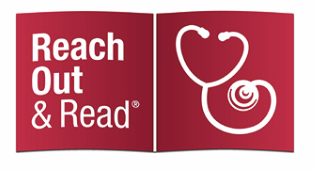Your Partner in Raising Lifelong Readers
Booktrition curates a distinguished library of educator-crafted books and premium learning resources, thoughtfully designed to enrich your child’s growth and inspire a deep, lasting love of reading—at every milestone.

Booktrition is dedicated to making literacy a natural part of each day, providing expertly selected books and evidence-informed support that empower children to flourish as confident early readers.
As an extension of this mission, every order helps support Reach Out and Read, bringing early books to young children during pediatric visits and nurturing a love of reading from the very beginning.

The “Big 3” of Raising Readers




By combining the best of art and science, Booktrition recommends the optimal independent* reading books for readers in kindergarten through third grade.
Throughout the site, and unlike publisher’s in-house leveling systems, books are systematically placed within each grade level to reflect the scope and sequence of the phonics taught in the classroom.
This means the leveling of each book is scientific and data-driven, without the bias and inconsistency inherent to other rubrics.
In addition to the science, our book recommendations are selectively and artfully chosen because of their child-friendly themes: empathy, kindness and love, and with topics these readers will find engrossing. Because in addition to growing young, well-rounded readers, we also need to help grow young and well-rounded humans!
-
We define “independent reading” as reading alone or reading aloud to a parent or teacher with minimal help from the caregiver. Research shows young readers make more reading gains when a parent, teacher or caregiver helps to “scaffold” reading through use of properly-leveled books (where the child is able to decode 80%-95% of words, without guessing based on pictures or context clues). This yields the very best results particularly through second grade, when learners are actively still acquiring new phonics skills. More on this, and so much more, on our blog and instagram.

Booktrition Data
Throughout the site, and unlike publisher’s in-house leveling systems, books are systematically placed within each grade level to reflect the scope and sequence of the phonics taught in the classroom. This means the leveling of each book is scientific and data-driven, without the bias and inconsistency inherent to other rubrics. So just how exactly did Booktrition do this? By collecting the data of course! And, to be precise, we’re talking about phonetic data. For each book from kindergarten through most of second grade, Booktrition collected and cataloged every single word, totaling over 21,000 words. But why do this? By leading the leveling system within the Booktrition website with phonetic data, books were able to be placed appropriately and analyzed for decodability. On average, a book was placed within in a designated part of the school year if the data found that the combined highly phonetic and sight words totaled at least 80%. In the aggregate of all data collected, there are also excellent learning opportunities for our young readers, parents and educators. Want to see more data broken down by grade? We invite you to take a look at The Data page.
Meet Libby Pingpank and Booktrition
What's New on the Blog
What's New on the Blog
Check out the blog — where current events, ideas both old and new, and research intersect.

What’s new on the Gram
Don’t miss a Trivia Tuesday! And for more literacy content, follow us @booktrition

“The more that you read, the more things you will know. The more that you learn, the more places you’ll go.”
Dr. Seuss
Contact
askbooktrition@gmail.com
follow us @booktrition
Subscribe to our newsletter
























